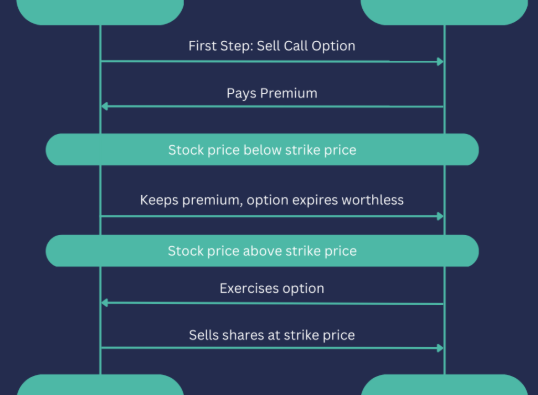
As the cost of higher education continues to rise, many parents are looking for ways to save for their children’s college expenses in a tax-efficient manner. With the cost of tuition, room and board, and additional fees increasing at a rapid pace, it’s essential to plan ahead for these future costs. A 529 plan is one of the best tools available to help families save for education, offering significant tax advantages and flexibility. Here’s everything you need to know about 529 plans and why they are crucial for education savings.
What is a 529 Plan?
A 529 plan is a state-sponsored investment account designed to help families save for educational expenses in a tax-efficient way. The funds in a 529 plan grow tax-free, and as long as they are used for qualified education expenses, they can be withdrawn without incurring taxes. Eligible expenses include tuition, books, technology, housing, and fees. Additionally, up to $10,000 per year can be used for K-12 tuition, and the funds can also cover apprenticeship programs or be used to refinance existing student loans.
Although each state has its own 529 plan, you’re not restricted to choosing your state’s plan. Many states offer tax deductions or credits for contributions made to their own state’s 529 plan, which can provide added benefits for residents.
Who Owns the 529 Plan?
The account holder is the individual who owns the 529 plan and retains legal control over the funds. However, a key consideration is that the assets in the 529 plan are typically factored into the Expected Family Contribution (EFC) for financial aid purposes. The EFC is used to determine eligibility for federal financial aid, so a higher contribution could reduce eligibility for aid.
However, if a grandparent holds the 529 plan, the account balance is not considered in the FAFSA calculation, which can be beneficial for maximizing financial aid eligibility. Another option is transferring assets from custodial accounts, like a UTMA (Uniform Transfer to Minors Account), into a 529 plan. While this allows tax-free growth for educational expenses, it also means you’ll lose the ability to use the funds for non-educational purposes without incurring tax penalties.
The good news is that account holders can change the beneficiary of the 529 plan at any time, as long as the new beneficiary is a qualified relative of the original one. This flexibility means that if the child originally designated for the 529 plan decides not to attend college, the funds can be redirected to another child or even a grandchild.
Choosing the Right 529 Plan
Many states offer tax deductions for contributions made to their specific 529 plans. For example, New York provides a state tax deduction of up to $5,000 ($10,000 for married couples filing jointly). When choosing a 529 plan, it’s important to evaluate factors such as the plan’s tax advantages, fees, and available investment options.
There are two main types of 529 plans: advisor-sold and direct-sold. Direct-sold plans are purchased directly from the state and tend to have lower fees. However, these plans may offer fewer investment options, often limited to target-date or age-based asset allocation strategies.
On the other hand, advisor-sold plans are purchased through a financial advisor and may provide a broader selection of investment portfolios, including customized options. While advisor-sold plans offer more flexibility, they usually come with higher fees. It’s crucial to evaluate whether the additional advisor services justify the higher costs.
Contribution Limits and Rules
Contribution limits for 529 plans vary by state, typically ranging from $230,000 to $550,000 per beneficiary. However, contributions are still subject to the annual gift tax exclusion, which was $16,000 per donor in 2022. Additionally, 529 plans allow a lump-sum contribution of up to five years’ worth of contributions (up to $80,000 for an individual or $160,000 for a married couple filing jointly) without triggering federal gift taxes.
While this strategy can accelerate growth through compounding, it’s important to note that you can only claim a state tax deduction in the year the contribution is made. For example, if you contribute $80,000 in one year to a New York state plan, you can only claim the $5,000 state tax deduction for that year. Alternatively, spreading the contributions over five years would allow you to claim the tax deduction annually.
Contributions to a 529 plan are considered completed gifts and are excluded from your taxable estate, which can provide an estate tax benefit. You can still maintain control over the assets in the plan, even though they are outside of your taxable estate.
Withdrawal Rules for 529 Plans
Withdrawals from a 529 plan are tax-free as long as they are used for qualified education expenses, such as tuition, books, room and board, and certain technology fees. However, some states may not recognize K-12 tuition as a qualified expense. Non-qualified withdrawals will incur a penalty on the earnings, in addition to regular income taxes. However, if the beneficiary receives a scholarship, you can withdraw up to the scholarship amount without the 10% penalty, though the earnings will still be taxed.
One of the advantages of a 529 plan is that there are no mandatory withdrawal deadlines, allowing you to keep the funds in the account for as long as needed.
Conclusion: Why 529 Plans Are a Smart Choice for Education Savings
529 plans are an excellent tool for saving for education, offering tax-free growth and flexible options for beneficiaries. Here are some key points to keep in mind:
- Earnings and withdrawals for qualified educational expenses are tax-free.
- The account holder can change the beneficiary, as long as the new beneficiary is a qualified relative.
- Contributions are considered completed gifts and can reduce your taxable estate.
- There are no withdrawal deadlines, allowing funds to grow as needed.
By taking advantage of the benefits of a 529 plan, you can make significant progress toward funding your child’s education in a tax-efficient manner, while also enjoying flexibility and control over the assets.









